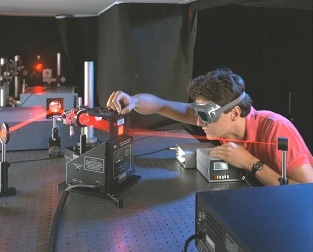 |
| ||||
Home Page
F.A.Qs
Statistical Charts
Past Contests
Scheduled Contests
Award Contest
| ||||||||||
| Online Judge | Problem Set | Authors | Online Contests | User | ||||||
|---|---|---|---|---|---|---|---|---|---|---|
| Web Board Home Page F.A.Qs Statistical Charts | Current Contest Past Contests Scheduled Contests Award Contest | |||||||||
|
Language: Laserbox
Description  A laserbox is a game involving some optical equipment. The game board is a square n×n grid. On each grid point, a gadget called a right-turner can be placed and several such gadgets are included. Finally, there is a ruby laser, and if the laser is mounted at the bottom end of a column, the beam will be directed northwards through that column. Analogously, the laser beam may be directed southwards from the top of a column, eastwards from the start of a row or westwards from the end of the row. A laserbox is a game involving some optical equipment. The game board is a square n×n grid. On each grid point, a gadget called a right-turner can be placed and several such gadgets are included. Finally, there is a ruby laser, and if the laser is mounted at the bottom end of a column, the beam will be directed northwards through that column. Analogously, the laser beam may be directed southwards from the top of a column, eastwards from the start of a row or westwards from the end of the row.
The game starts with some right-turners being spread out on some grid points and the laser (switched off) being mounted somewhere along the border of the rectangle. The player then tries to deduce where the beam will emerge when the laser is switched on. The effect of a right-turner is to deflect the beam ninety degrees to the right, regardless of from which of the four directions it enters. Your program must do exactly what the player is supposed to do. Input On the first line of the input is a single positive integer, telling the number of test cases to follow. The first line of each test case consists of two integers n r, where 1 ≤ n ≤ 50 is the size of the board and 1 ≤ r ≤ 50 the number of right-turners. The following r lines contain the coordinates x y of the right-turners. No two right-turners will have the same coordinates.
Finally, a line with two integers indicating the laser position follows. The bottom of column six is denoted by 6 0 and the start of row seven by 0 7. If the zeroes are replaced by n+1, the laser is placed at the top of column six and the end of row seven, respectively. Output For each test case, output one line containing the coordinates X Y of the beam as it leaves the board. The same rules as for the laser apply, so X may equal 0 or n+1 or else Y equal 0 or n+1. If the beam gets caught and does not leave the board, the output should be 0 0. Sample Input 2 2 3 1 1 1 2 2 2 3 1 3 6 1 1 1 3 2 2 2 3 3 1 3 2 2 0 Sample Output 2 0 0 2 Source |
[Submit] [Go Back] [Status] [Discuss]
All Rights Reserved 2003-2013 Ying Fuchen,Xu Pengcheng,Xie Di
Any problem, Please Contact Administrator